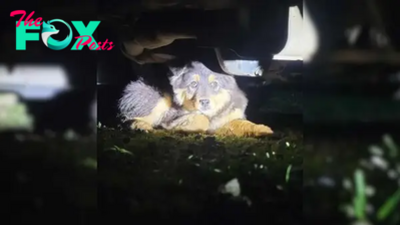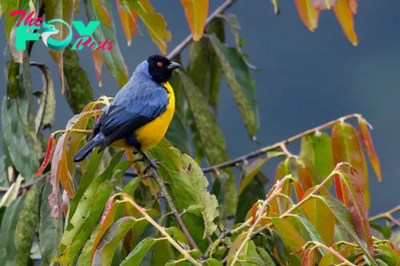Pet
QL An Eye-Catching Bird featuring Stunning Blue and Yellow Plumage
The Red-legged Honey Bunting, also known as Uraeginthus ruberrimus in the scientific world, is a vibrant and Petite bird that can be spotted throughout Asia. Often called the African Silverbill or Red-billed Silverbill, this bird belongs to the finch family. With their small stature and colorful feathers, they are a delight to see for bird enthusiasts and nature lovers alike.

The Red-legged Honey Bunting is a tiny bird measuring 10–11 cm with a weight ranging from 9–12 grams. Its unique small red bill stands out due to its vibrant color. The male birds sport a striking blue head and neck, along with a red patch on their lower throat and a black patch around their eyes. Their underparts are white, while their top parts are a mix of brownish-grey. On the other hand, females have a brownish-grey head and neck with a pale eye ring and a white patch on their lower throat. Their underparts are buffy-brown, and their top parts are brownish-grey as well.

The Red-legged Honey Bunting is a bird commonly seen in various parts of Asia such as Bangladesh, India, Sri Lanka, and Myanmar. They tend to inhabit gardens and agricultural areas, but they are more commonly found in open grassy environments like savannas, meadows, and grasslands.
These small birds have a diet that includes nectar, seeds, and insects. They are known for their love of blossom nectar, which is where they get their name. Their ability to gather nectar from flowers is due to their unique tongue. In addition to nectar, they also feed on insects and seeds that they find on the ground.

From March to August, the Red-legged Honey Bunting breeds and the males put on a show to attract females. Once a partnership is formed, they build a nest using grass and twigs. The female lays two to four eggs and takes care of them for about two weeks. Both parents share the responsibility of incubating the eggs and feeding the chicks.
Despite facing habitat loss and fragmentation, the Red-legged Honey Bunting is classified as a species of Least Concern by the International Union for Conservation of Nature (IUCN). They can still be found in a variety of habitats across Asia, but their numbers are believed to be declining.

The Red-legged Honey Bunting, a Petite and vibrant bird, can be spotted across various regions in Asia. With its striking plumage, love for nectar, and distinct tongue, this bird is a fascinating sight. Despite facing challenges like habitat destruction, they continue to have a scattered population and are categorized as a species of least concern by the IUCN.

-

 Pet2h ago
Pet2h agoth.Each passing year brings a deeper sense of loneliness on my birthday, wrapping me in a melancholic yearning for a heartfelt gesture that might bring some brightness to my day.
-

 Pet2h ago
Pet2h ago2S.Intriguing Encounter: Tourists Astonished by Unusual Feet of Vodoma Tribe’s Children.2S
-

 Pet5h ago
Pet5h agoLamz.Cheers to Another Spin Around the Sun: Embracing Gratitude and Joy on My Birthday!
-

 Pet8h ago
Pet8h agonht.After being separated for more than 7 years, two canine brothers, Alex and Archie, hugged each other warmly when they unexpectedly met on the street. This touching moment touched millions online.
-

 Pet8h ago
Pet8h agonht.With a pleading look, the dog begs the strangers who stop to pet him on the street, silently imploring: “Please don’t leave me alone there.”
-
Pet14h ago
th.On this day commemorating my birth, I keenly recognize my imperfections, yet not a single person has extended their greetings to me.
-
Pet14h ago
nht.Every morning, a small dog faithfully follows a police officer down the street, walking over 2 kilometers each day, hoping the officer will adopt him.
-

 Pet18h ago
Pet18h agoLamz.From Shelter to Sanctuary: A Mother Dog’s Journey from Solitude to Surging Love, Delivering 14 Adorable Puppies Amidst New Beginnings and Resilience

























